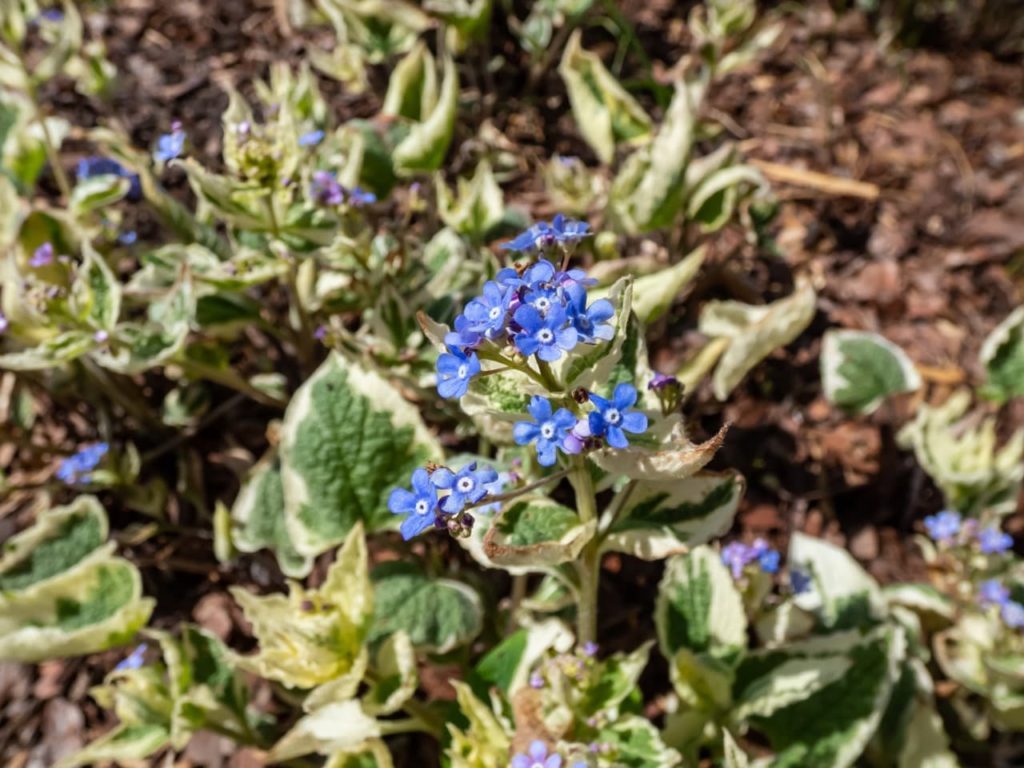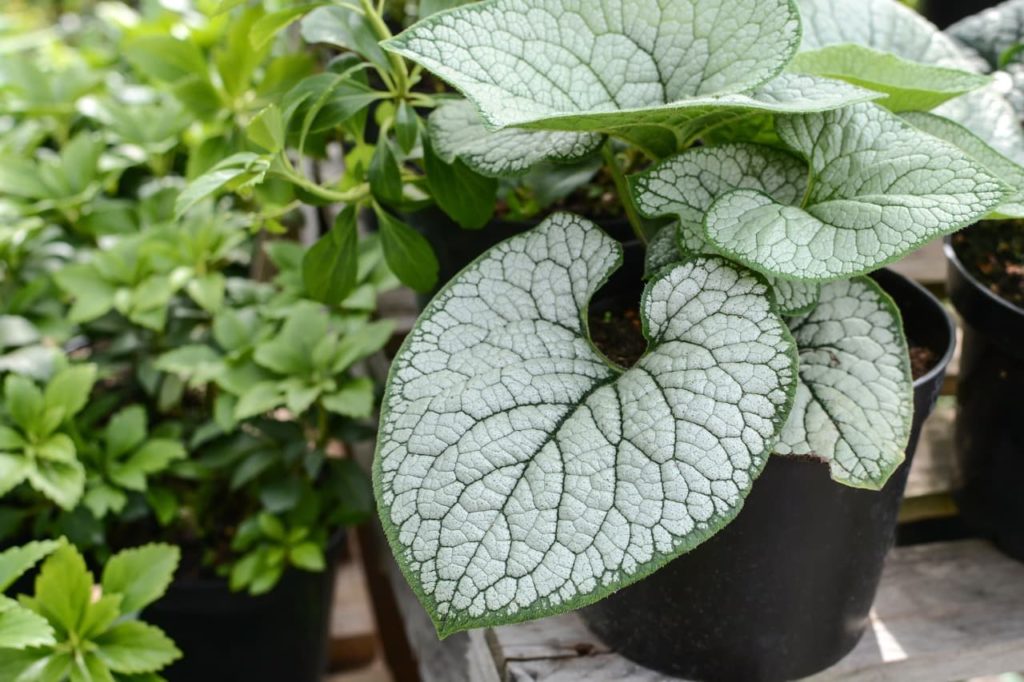perennial > BRUNNERA
IN THIS GUIDE
BRUNNERA GUIDES

Brunnera macrophylla , also known by many as ‘ Siberian Bugloss ’ , is a commonly develop garden plant in the UK .
Though not native to our shores , it is well - become to a shaded or part shaded spot and will generally be untroubled by clout or escargot , unlike hostas and other plantsfor spook .
Brunnera macrophyllais native to woodland ecosystems of the Caucuses and Türkiye.1Brunnera macrophylla ( Adams ) . ( n.d . ) . Kew Botanic Gardens . recall June 6 , 2023 , fromhttps://powo.science.kew.org/taxon/urn:lsid:ipni.org:names:113714-1

It is the best be intimate of a number of species within the Brunnera genus and is for certain the most usually grown choice here in the UK .
Particularly treasure as ground covering fire plants for mottled , fond or even deeper shade , many cultivar of this species of Brunnera have been developed , with some prized as foliage plants rather than for their flowersbecause of their vary leaves .
Overview
PreferredPartial Shade or Full Shade
ExposureSheltered
Height0.1 – 0.5 K

Spread0.1 – 0.5 thousand
Bloom TimeApril to May
PreferredMost fertile soils

MoistureMoist but well - drained
pHAny
Their flower , while small , are also delightful .

A swell choice for timber or timberland gardens , Brunnera not only creates right priming cover but also attracts pollinator in the springiness , around the same time that these are require for yield tree diagram pollenation .
Common Varieties
There are legion varieties of Brunnera that you might develop .
One of the ways to narrow down down your alternative is to look at the Brunnera which have been give an Award of Garden Merit from the RHS :
Has blue flower and green folio that are margined with pick .

Known for its silverish unripened - veined leaves with a frosty appearance .
Has silvery foliage with sparse veining in green .
Also has silverish leaves but has white peak too .

Planting Brunnera
Brunnera can be set any metre from May to September , but planting in later outflow or other fall is ideal .
When choosing where to engraft them , it is of import to think about the amount of sunlight an area receive .
Brunnera can grapple in the sun as long as the soil has enough moisture , but it will generally do well in dappled , partial or full shade .

you could turn Brunnera in the ground in a suitable office or in a container .
When plant , whether in the ground or in a container , the plant should sit around at the same level that it was at in its previous pot so that the top of the root system is level with the surface of the arise mass medium .
tauten the land or maturate medium around the new works and water it in well .

piss frequently until the plant becomes well - establish .
Brunnera needs moist but free - run out soil or any passably fertile peat - free ontogenesis medium when grown in a container .
These plants do take ordered wet but , other than this , are not specially fussy about the soil or culture medium in which they grow .

Brunnera is not usually a industrial plant that home - agriculturist will work from ejaculate , as most cultivar are purchase as potted plant .
“ Seed roll up from cultivars will often not be true to the parent plant , meaning that most cultivars are best buy as plants that have been propagated clone , ” explains Horticultural Consultant Colin Skelly .
“ Some cultivars can run to return to the species , Brunnera macrophylla , and should be dug up and the return sections removed so that this portion does not end up engulfing the usually less vigorous cultivar . ”
To propagate a Brunnera that you already spring up in your garden , root cuttings can be taken in the wintertime months .
or else , plants can simply be lifted and divided in the other outflow .
However , if you would wish to develop Brunnera from source , it is possible to do so .
Often , they will self - ejaculate in ideal shape , but to take thing into your own hands , mix some seeds into a moist potting mix and then place this intermixture in a plastic bag and pop it in the Deepfreeze .
Cold stratify the seeds for around 4 workweek .
After this , the seeded player should be sown at temperatures of 16 ° C and should spud within 1 - 3 month .
However , germination charge per unit may still be patchy .
Brunnera Plant Care
Once you have Brunnera develop in your garden , you should find it to be a remarkably gentle , trouble - free and humiliated - maintenance addition to your quad .
Brunnera should , as mentioned above , be well - watered as it becomes found .
In many cases , natural rainfall should often be sufficient once the plant has instal andyou wo n’t need to think about irrigate much , if at all .
No pruning is required when growing Brunnera , but you’re able to thin out off any brown leaves and deadhead when the autumn get if you like to do so .
While pruning is not necessary , thud can become overgrown or congested over time , so it is best practice to lift and divide ripe Brunnera plants every 3 years or so .
Of course , this is also how you will most easy be able to get new plant to place elsewhere in your garden .
To divide a Brunnera industrial plant , simply lift it using a garden fork .
Divide it with your hand or with a jigaboo , before separating and replant the surgical incision you have created .
Make certain that each section or division has root and you should be able to create a whole cluster of new plants .
Common Problems
Brunneras do n’t tend to have many serious problems and what problems they do have incline to be related to improper location or care .
As long as your plants are in fertile dirt that is moist yet free - draining and are not getting too much Lord’s Day , you should generally regain that no dandy problems arise .
Brunnera is notably stagnate resistant most of the time and it is more often than not not eat on by pasture animals due to the grain of the leafage .
However , Brunnera can still be deplete by pests every once in a while .
It is not uncommon to see some leaf harm do by nematodes , slugs or rabbits if you have these animal in your garden .
The leaves of a Brunnera flora turning brown is typically a sign of plant tenseness .
commonly , there is an issue with the environmental conditions that do the leaves on the plant to expire and potentially neglect off .
Brown leaves on Brunnera are most commonly due to :
Of these three , the first two are the most coarse , so most of the time , the problem will be easy to direct by execute the plant to a more suitable location and hold certain that you water more frequently , specially if you are growing your Brunnera in a toilet .
Brunnera defecate good reason cover as it can spread relatively chop-chop .
“ Brunnera ‘ Alexander ’s Great ’ is a particularly vigorous , turgid - will cultivar that is ideal for use as dry land cover , ” adds Colin .
This signify that where the stipulation are ideal , it can have a tendency to take over and may be considered invasive , in the sense that it will outcompete other plant .
However , if you get up and divide Brunnera clumps when they are mature , you should not find that these are plants that will get out of control condition and you should be able-bodied to keep them in check .
In some areas , they will ego - seed where shape are moist enough , but this is usually of benefit and not a job in most UK garden .
Indoor Growing
Though not typically get as a houseplant , it is certainly potential to spring up Brunnera indoors .
The lower light floor indoors are not loosely a challenge to these shade - enjoy plants .
However , it is important to make certain that you water enough to keep the growing medium moist ( though not waterlogged ) at all times .
You will also involve to keep the plant life in a reasonably nerveless room in your home and ideally not a centrally heated space , which will get too affectionate and dry .
commend , this is a herbaceous perennial that will die back over the winter months before burst into newfangled growth in the spring .
While it is dormant , the plant should be placed in a service department , shed or other similar locating before bringing it back indoors in the late wintertime or former outflow .